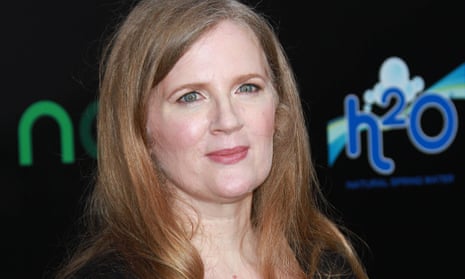JRR Tolkien’s fantasy novels have been elbowed out of the annual lineup of the most popular books for schoolchildren by a deluge of dark dystopias and urban fantasies.
The seventh What Kids Are Reading report, which analyses the reading habits of over half a million children in over 2,700 UK schools, revealed today that Tolkien’s books have dropped out of the overall most popular list for the first time since the report began six years ago. In previous years, Tolkien’s titles have featured within the chart’s top 10 places, mostly among secondary-school children.
Instead, this year in secondary schools the most popular title was John Green’s tale of a heartbreaking teenage romance, The Fault in Our Stars, followed by two dystopian stories: Suzanne Collins’s Catching Fire, from the Hunger Games series, and Veronica Roth’s Divergent, set in a world where people are classified according to their personality traits.
Cassandra Clare, who only had one book in the top 20 last year, now has five titles among secondary-school children’s most popular books, all from her urban fantasy Mortal Instruments series, in which human-angel hybrids walk the earth.
“Although [Tolkien] remains popular with some students of this age, his books didn’t attract enough votes to make the overall top 20. It could be inferred that he was at his most popular when the Lord of the Rings films were all the rage – and perhaps we’ll see a Hobbit effect with current schoolchildren, but it’s too early to tell,” said a spokesperson for the report.
In primary schools, the most popular title was David Walliams’s Demon Dentist, with Liz Pichon, a newcomer to the report’s charts, in second place with Everything’s Amazing (Sort of), the third in her comic series about Tom Gates. JK Rowling’s Harry Potter and the Chamber of Secrets was in third place.
The report found that UK pupils’ most popular reads fell into two “distinct” categories - either dystopian fantasies by the likes of Collins, Clare and Roth, or what it described as “irreverent, larger than life anti-hero comedies” such as Kinney’s Wimpy Kid stories, Dahl’s The Twits or Walliams’ Gangsta Granny. “While the primary chart top 20 is split down the middle, featuring equal amounts of comedy and fantasy, by secondary school the ‘most popular’ charts almost exclusively feature darker conflicts from an epic fantasy genre,” it said.
The report, compiled by Renaissance Learning, also features a “most-read” chart, indicating the number of times a book was read in school, which reveals a marked difference to its lists of books children enjoyed reading the most. In primary schools, the most-read books were Roald Dahl’s The Twits and Fantastic Mr Fox, followed by Jeff Kinney’s Diary of a Wimpy Kid, while in secondary schools, three Wimpy Kid titles topped the most-read charts.
Apart from Julia Donaldson’s The Gruffalo, in 17th place, every single title in primary-school children’s most-read list was by a male author, while in secondary schools, two Hunger Games titles by Collins, in fourth and 12th place, were the only books by female writers.
The most popular author overall was Kinney, said the report, with Dahl and Roderick Hunt in joint second, followed by Walliams, Horrid Henry creator Francesca Simon, and Donaldson and Collins in joint fifth place.
The report’s author, Keith Topping, who is professor of educational and social research at Dundee University, said that results also show a “sharp contrast” in the difficulty of books read by primary and secondary pupils.
“Primary-school pupils, particularly in years one to five, show a strong preference for challenging books that are significantly beyond their natural reading age,” he said.
But “we then see a marked difference in year seven, where favoured books are no longer above chronological age, but six months below it and in ensuing years the difficulty of books plateaus or declines,” he added.
“They aren’t necessarily easy books, but the issue is that schools are supposed to be pushing and pushing reading ability so it is as good as it can be by the time pupils leave school,” Topping said. “Primary is doing OK – not as well as we’d like in the last year, but at secondary, it plateaus and goes down, which is not a happy scenario at all.”

Comments (…)
Sign in or create your Guardian account to join the discussion